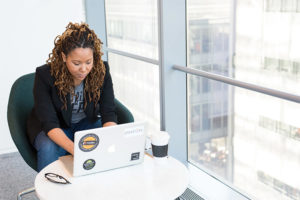Anxiety disorders are notoriously difficult to treat. Prescription medication can be expensive and, for many people, simply not effective enough to help the way they need it to. Thankfully, there are several natural remedies for anxiety that actually work and don’t come with the risks associated with prescription drugs. Here are six of the best options you should try today.
1) Sleep well
One of the most important things you can do for your anxiety is to get enough sleep. Most people need around eight hours of sleep per night. Consider making some changes to your sleep habits, such as going to bed and waking up at the same time each day, avoiding caffeine and electronics before bed, and creating a relaxing bedtime routine. You may also want to try some natural anxiety medications like chamomile or lavender oil to help you relax and get a good night’s sleep.
Natural anxiety medication that works better than over-the-counter drugs is valerian root because it will last through the whole night and reduce symptoms of insomnia. If you’re in a pinch and need something fast, try taking a spoonful of honey with cinnamon mixed in instead! Honey has been shown to have natural antifungal properties which are effective against parasites and yeast infections. Honey has even been found useful in fighting depression, reducing cough frequency, relieving pain from burns and bites, as well as treating skin conditions. Cinnamon reduces inflammation and is loaded with antioxidants; all this makes this combo an excellent way to fight those nighttime blues.
2) Eat right
You can use natural anxiety medication to help your anxiety, but there are also some things you can do to help your anxiety on your own. One of the best things you can do is to make sure you’re eating right. Eating a healthy diet helps your body to function at its best and can reduce stress and anxiety. Eating healthy means that you’ll be getting plenty of omega-3 fatty acids, magnesium, B vitamins and other nutrients that your body needs. There’s not one specific food that will cure anxiety in itself, but what you eat can have an effect on how you feel over time. Healthy fats like avocados, eggs, and salmon can boost brain health which can reduce anxiety symptoms. Certain vegetables like tomatoes, kale, and spinach provide folate which is important for brain health. And protein like nuts and legumes provides amino acids which promote relaxation .
The last thing to mention about eating right is that it isn’t just about what you eat, but when you eat it too. Studies show that people who skip breakfast are more likely to experience feelings of anxiety than those who start their day with a nutritious meal. If you’ve been skipping breakfast because it makes your stomach hurt or gives you indigestion, then now might be the time to try again! For many people, regular breakfasts often alleviate pre-existing conditions such as gas and bloating. Plus, it’s never good to go all day without eating anything so if you’re feeling hungry, you might as well eat something (even if it’s a simple snack) rather than waiting until dinner time.
Try different types of foods until you find ones that work for your personal dietary needs and schedule – no need to stick with what doesn’t work if there are so many options out there!
3) Exercise regularly
One of the best things you can do for your mental health is to exercise regularly. Exercise releases endorphins, which have mood-boosting effects. It also helps to reduce stress and anxiety. Plus, it can give you a sense of accomplishment and confidence. Try taking up yoga or go on a hike with friends. The key is just to keep moving! Walking around outside will help you get more oxygen flowing through your body and increase serotonin levels. If you find yourself stuck at home, try doing some light gardening work or going for a walk around the block. Not only will these activities improve your mood, but they will help release any pent-up energy that might be contributing to your anxious feelings. You’ll feel better physically and mentally when you’re using your body as intended. And who knows?
These exercises may even lead to weight loss and an improved complexion too! So what are you waiting for? Get out there and move.
4) Do a mental cleanse
One of the best ways to reduce anxiety is to do a mental cleanse. This means getting rid of all the negative thoughts and energy that are weighing you down. To do this, start by taking a deep breath and then let go of all the pent-up tension in your body. Once you’ve released the physical tension, it’s time to clear your mind. Focus on your breath and let go of any thoughts that are causing you stress. Visualize yourself in a calm, happy place and just breathe. It doesn’t matter what the scenario is–it could be lying on a beach or sitting under a tree surrounded by nature. If you’re not good at visualizing, pick an item around you like your favorite shirt or blanket and hold onto it tightly while focusing on something positive in your life.
One technique I really love from my days working with individuals who have autism spectrum disorder (ASD) is called grounding exercises. Grounding exercises help people get back into their bodies and feel more present. Here’s how to try one: Start by standing up straight with your feet firmly planted on the ground. Put one hand on your chest and one hand on your stomach, feeling both parts of your body rising and falling as you take a deep breath in through your nose. Next, put both hands out in front of you palms up, imagining how strong they are as they push against an imaginary wall that stands before them. Take another deep breath in through your nose and exhale slowly, envisioning everything flowing out of you as though you were shedding layers of skin. Now close your eyes and see what kind of animal is most symbolic to you–something that would never betray you or abandon you. You might see a cheetah, lion, rabbit, fox or even deer. Whatever comes to mind first is the right one for you.
5) Take CBD oil
If you’re looking for a natural remedy for anxiety, you may want to try CBD oil. CBD oil is derived from the cannabis plant, but it doesn’t contain any THC, so it won’t make you high. Some people find that taking CBD oil helps to relieve their anxiety symptoms. It’s thought to work by interacting with the body’s endocannabinoid system. If you’re interested in trying CBD oil, be sure to talk to your doctor first to make sure it’s safe for you. You should also check with your employer because CBD oil might not be legal where you live or work. Finally, always read labels carefully and avoid buying oils that have unknown ingredients or potentially harmful additives like propylene glycol.
6) Try yoga and breathing exercises
Yoga and breathing exercises are both great natural remedies for anxiety. Yoga can help to calm the mind and body, while breathing exercises can help to control the breath and relax the body. Both of these activities can be done at home with little to no equipment. Try starting off your day with a yoga or breathing exercise session and see how you feel throughout the day. If you don’t have time for a full workout, try incorporating one or two poses into your routine like mountain pose or downward facing dog. When trying yoga poses, remember to keep yourself safe by avoiding twisting too much and avoid putting any pressure on your neck by not looking up when stretching.
It’s important that if any poses hurt that you stop immediately so as not to harm yourself. You should also make sure to stay hydrated and drink plenty of water in order to keep your muscles pliable and reduce muscle tension.
If after all this you still find that it is hard to manage your stress levels, speak with a doctor about what other options might work for you.











 Know When to Take a Break
Know When to Take a Break

